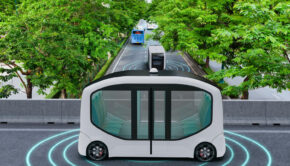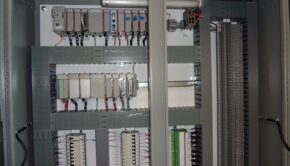Advancements in Industrial Safety & Efficiency
Industrialization changed the world by providing a way to produce goods in a faster and more cost-effective manner. Massive improvements have been made to industrial safety and efficiency over the years in an effort to maximize production while minimizing risk to workers. Thanks to the modern bobcat training, a new Renaissance of safety and efficiency innovation is taking place across a wide range of industries.

Image Source: Pixabay
Reducing Friction
When it comes to efficiency, many industries have to contend with the limitations imposed by friction. Friction is an inescapable physical force that wears down industrial parts and equipment vital to production. Friction is such a problem within the industrial world that addressing and preventing it accounts for 20% of the energy consumption of the industrial field across the globe.
Engineering firms are constantly developing new technologies in an effort to reduce the damaging effects of friction or to use it in a productive way. New gear systems that harness friction to produce torque forgo the fragile teeth of traditional gears, reducing the need for lubrication and constant repair. New high-tech lubricants are just some of the ways that the industrial field is tackling the problem of friction.
The quest to mitigate the negative effects of friction while making the most of its positive effects goes far beyond the goal of increased efficiency. Industrial workers will also benefit from an added level of safety with these new technological innovations, as machines and tools with less wear are far safer than those in need of regular repairs. Combining these friction-based technologies with other advanced workplace safety technologies will result in a safer and more productive industrial workplace.
Protecting Workers
Industrial safety standards have come a long way since the 1970s and prior, when thousands of industrial workers regularly worked with asbestos, a substance which put workers at risk of mesothelioma. Despite improvements to workplace safety, removal of dangerous substances remains one of the most important goals for the industrial sector. Protecting workers is an investment as it keeps them productive and healthy while also reducing the risk of companies facing litigation due to preventable accidents in the workplace.
The modern industrial workplace benefits from advanced technologies designed to enhance safety in a variety of ways. From wearable tech that senses whether a worker is fatigued or under the influence to virtual reality safety training programs, the modern industrial worker has an arsenal of tools to help keep them safe. Increased situational awareness and monitoring of fatigue levels can help to massively reduce instances of preventable workplace injuries while also maximizing a worker’s ability to do their job effectively. Also, Lockout Tagout Kits are used for the areas and machinery that is under repair or maintenance to ensure safety of employees.
Industrial businesses should still obtain worker’s compensation insurance to help cover any costs that might arise when a workplace injury does occur, advancements in safety tech are reducing the likelihood of accidents happening in the first place. When workers are protected from fatigue and accidents they end up producing more overall, making worker safety in industrial settings a must.
Getting Comfortable With Robots
While safety technology does wonders when it comes to protecting industrial workers, automation is the true driving force of safety and efficiency in the world of industry. Automated robotic workers have been present in manufacturing plants for decades, but now their use is expanding to an unprecedented level. Automated warehouse drones and robots that perform repetitive labor that can be dangerous to human workers are now commonplace in industrial settings.
Industrial robots that take over tasks such as packaging, material handling, assembly, and even more complex and intricate work like welding and laser operations are an absolute boon. The initial costs of implementing these robotic workers can seem daunting to many companies, but these robots tend to provide great return on investment in a relatively short period of time. Robotic workers not only increase overall productivity and efficiency, but safety as well through the handling of repetitive laborious tasks that can cause stress injuries in human workers.
Though many industrial workers are wary of automation, fearing that they will be outright replaced by a robot in the future, their fear is generally unfounded. Some jobs are indeed replaced by robotic workers, but the majority of the robots in industrial settings are used in a collaborative manner. These robots tend to perform menial tasks, even things as simple as holding key parts in place for workers.
Overall, factories that implement robotic workers tend to see a reduction in employee turnover. This is because the robots that industrial workers operate alongside are doing the more menial and repetitive tasks that are physically draining on workers. Robotic workers free up more time for their human counterparts to complete more advanced work, helping them to achieve greater job satisfaction in the long run.
Industrial safety and efficiency will always be a priority. As safety and efficiency increase, workers will continue to become happier and at less risk of injury, leading to longer and more productive careers. Whether this is achieved through VR training programs, innovative new technologies that harness the power of friction, or the more widespread adoption of automation, safety and efficiency improvements will continue to benefit the industrial world.
















